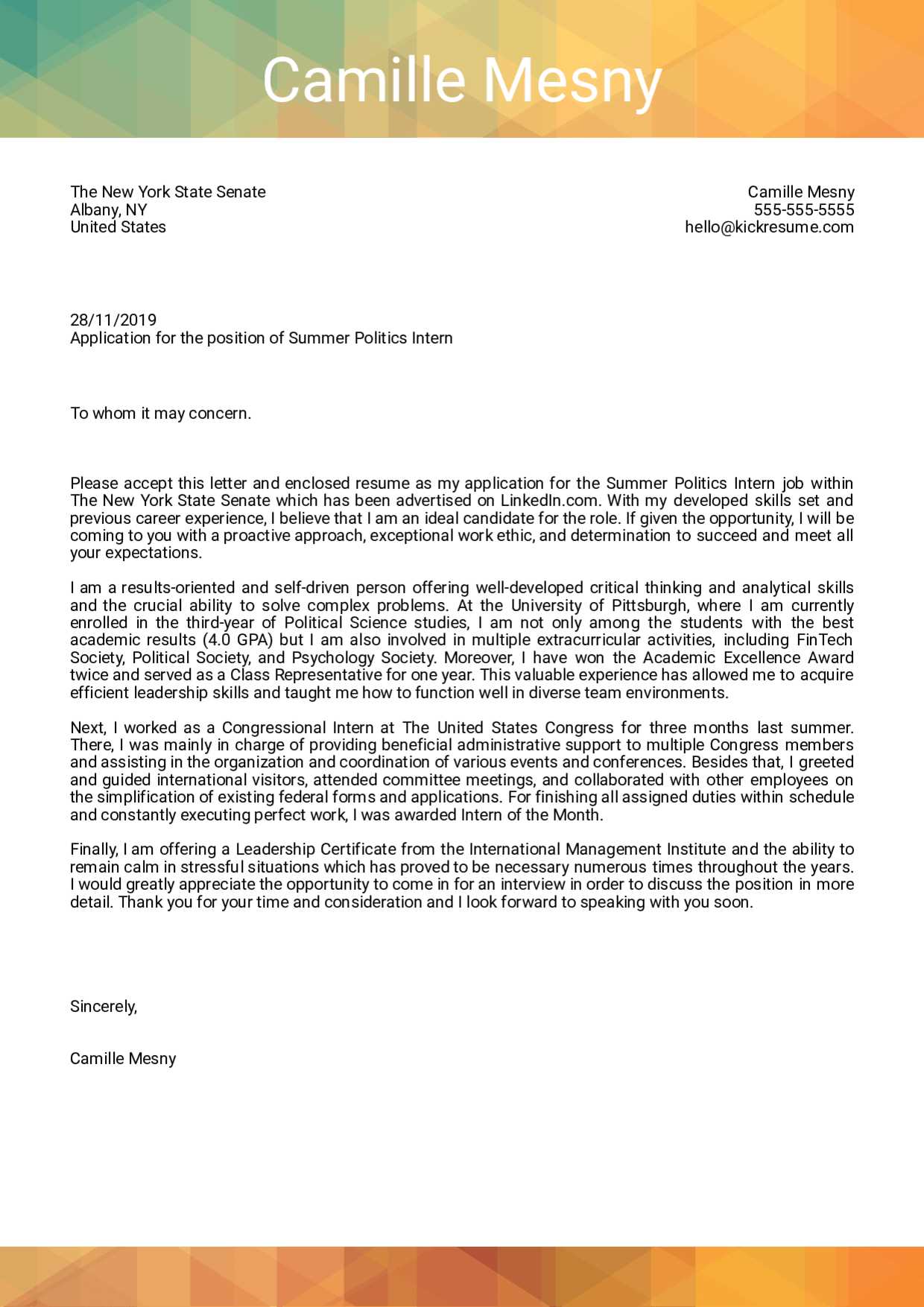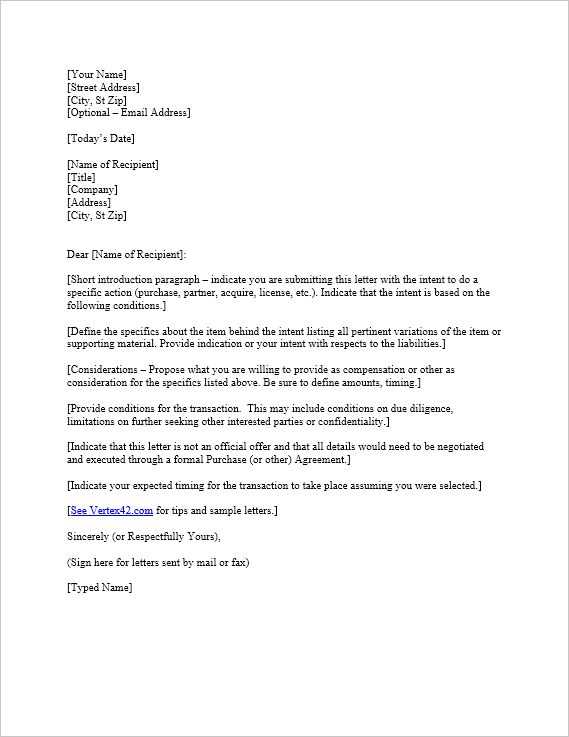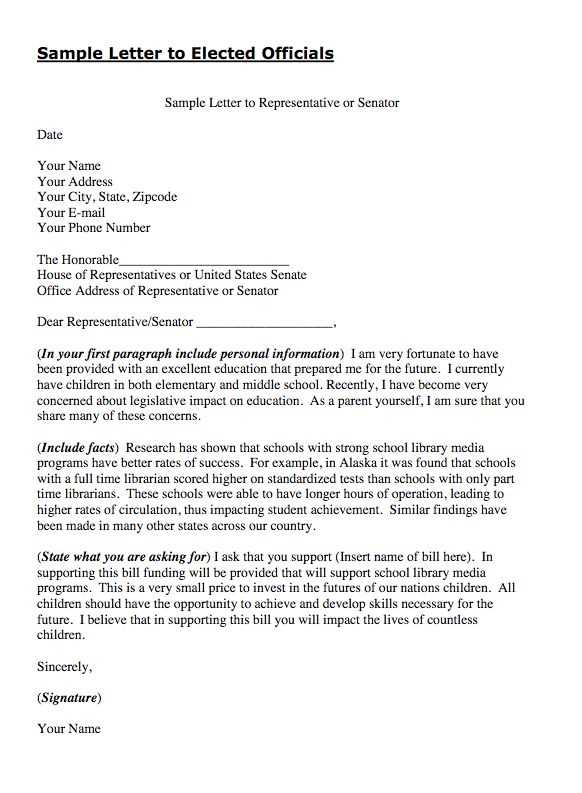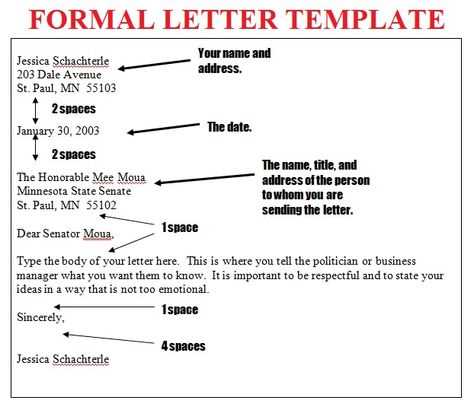Effective Letter Template to Contact Your Elected Official

Engaging with lawmakers and public decision-makers is a powerful way to express concerns and advocate for change. Crafting a well-structured message can significantly enhance the impact of your communication. Whether you are raising an issue, proposing a solution, or seeking action, presenting your case clearly and persuasively is essential.
Understanding the right approach can make all the difference in ensuring your voice is heard. The key lies in knowing how to communicate your message effectively while maintaining a respectful tone. A thoughtful and concise statement can lead to productive conversations and, ultimately, results that align with your objectives.
Properly designed correspondence not only conveys your point but also demonstrates your commitment to civic engagement. When done right, it fosters a sense of accountability and encourages those in power to consider your views seriously. The following guide will help you craft messages that stand out and get noticed.
How to Write to Your Representative
When reaching out to those in positions of power, it is important to communicate your thoughts in a clear and direct manner. A well-crafted message can help ensure that your concerns are taken seriously and addressed appropriately. The key to effective communication lies in presenting your points logically, while remaining respectful and professional throughout the process.
Start by clearly identifying the issue or topic you wish to discuss. Be specific about the problem and provide relevant details to give context. Make sure to state your position concisely and explain why the matter is important to you. Focus on presenting a solution or a desired course of action, rather than just outlining the problem.
Maintain a respectful tone and avoid language that could be perceived as confrontational or aggressive. A calm, rational approach is more likely to yield a positive response and help foster a constructive dialogue. Keep your message brief and to the point, ensuring that the core of your message is easily understood.
Key Elements of a Strong Letter

To effectively communicate your message, certain components must be included to ensure clarity, persuasiveness, and professionalism. Each element plays a crucial role in making your communication impactful and focused on achieving the desired outcome. A well-structured and compelling message can significantly increase the chances of receiving attention and action.
Here are the essential elements that should be part of your correspondence:
- Clear Introduction: Start by stating who you are and the purpose of your message. This helps the reader quickly understand the context and relevance.
- Concise Explanation of the Issue: Describe the matter at hand with enough detail to make your point clear, but avoid unnecessary information that may dilute your message.
- Personal Connection: Sharing why the issue matters to you personally can help establish a stronger connection and show genuine concern.
- Request for Action: Be specific about what you want the recipient to do. Clearly outline your expectations and suggest possible solutions if appropriate.
- Polite Conclusion: End on a respectful note, thanking the reader for their time and consideration, and offering to provide further information if necessary.
Including these key elements ensures that your communication is both effective and professional, helping to increase the likelihood of a meaningful response.
Choosing the Right Tone for Your Message
When communicating with public representatives, the tone you use can significantly impact how your message is received. A message that strikes the right balance between firmness and respect is more likely to get a positive response. The tone should align with the nature of the issue while maintaining professionalism and clarity.
Respect and Professionalism

Always approach the recipient with respect, regardless of the topic. A courteous tone encourages a constructive dialogue and demonstrates your seriousness. Even if you are addressing a critical issue, remaining polite and professional can help ensure your message is taken seriously, without coming across as confrontational.
Clarity and Conciseness
While being respectful, it’s also important to be direct and clear. Avoid overly emotional or complicated language that may detract from the key points you want to make. A concise, straightforward tone helps ensure that your message is understood and not lost in unnecessary details.
Effective Ways to Structure Your Request
When seeking action or support, how you present your request can make all the difference in achieving the desired outcome. A clear and organized structure not only makes your message easier to understand but also increases the chances of getting a prompt and favorable response. By following a logical flow, you can ensure that your points are compelling and your needs are addressed effectively.
Here are the key steps to follow when structuring your request:
- Start with a Clear Purpose: Immediately state what you are requesting and why it is important. This sets the tone for the rest of your message.
- Provide Context: Offer a brief background or explanation to give the recipient a clear understanding of the situation. Use relevant facts or examples to illustrate your point.
- Present a Solution or Action: Specify what you would like the recipient to do. Be clear and direct about your expectations.
- Express Gratitude: Thank the reader for considering your request. A polite closing can make a positive impression and encourage action.
By following this structure, you increase the likelihood of your message being taken seriously and lead to a more productive outcome.
Common Mistakes to Avoid in Letters
When reaching out to public representatives, certain missteps can diminish the effectiveness of your message. It’s important to avoid these common errors to ensure your communication remains clear, respectful, and persuasive. Small mistakes in tone, structure, or content can hinder your ability to achieve the desired outcome.
- Being Too Vague: Avoid general statements that don’t clearly explain your request. Be specific about what you need and why it matters.
- Using an Aggressive or Confrontational Tone: Even when discussing important or sensitive issues, maintain a respectful tone. Harsh language can shut down communication rather than foster it.
- Overloading with Information: Providing too many details or unrelated facts can overwhelm the reader. Stick to the essential points to keep your message focused.
- Failing to Proofread: Spelling mistakes, grammatical errors, or unclear phrasing can undermine your credibility. Always review your message before sending it.
- Not Being Clear About the Desired Outcome: Clearly state the action you want taken. Without a direct request, your message may be ignored or misunderstood.
Avoiding these mistakes helps ensure your message is well-received and taken seriously, increasing the likelihood of a productive response.
How to Follow Up with Officials
After sending your message, it’s important to ensure that it has been received and is being considered. Following up in a timely and respectful manner can help keep the issue on the recipient’s radar. A well-crafted follow-up can demonstrate your continued interest and urgency without being overly pushy.
Timing Your Follow-Up
Give the recipient enough time to review your message and respond before following up. Typically, waiting one to two weeks is appropriate, but the timing may vary depending on the urgency of the matter. Be mindful of the specific circumstances and try not to follow up too soon or too late.
Crafting Your Follow-Up Message

In your follow-up, politely remind the recipient of your initial request. Keep the tone respectful and concise. Acknowledge their busy schedule and express your appreciation for their time and attention. Be clear about why the matter is important and your desire for a response or action.
Examples of Impactful Letters to Officials
Understanding the structure and content of a well-crafted message can be instrumental in ensuring your request is taken seriously. The following examples demonstrate how different approaches can be used to effectively communicate various concerns, from policy changes to public services. These examples highlight key components such as clarity, tone, and directness, which make the messages stand out.
| Situation | Key Elements | Why It Works |
|---|---|---|
| Request for Environmental Policy Change | Clear objective, data-backed arguments, respectful tone | Establishes the issue with facts, presents a feasible solution, and maintains professionalism |
| Concern about Local Infrastructure | Specific problem, clear request for action, polite follow-up | Addresses a direct issue, suggests a way forward, and maintains a positive relationship |
| Support for a Public Initiative | Personal story, strong support for the initiative, call to action | Appeals to the recipient’s sense of responsibility, provides an emotional connection, and urges action |
By tailoring your message to fit the specific situation, you can craft a communication that not only captures attention but also fosters a productive dialogue with decision-makers.